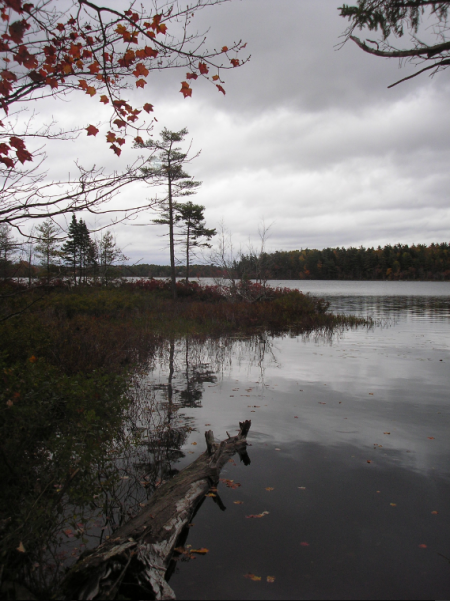On the outskirts of Lower Sackville, where suburbia gives way to trees and streams, there exists a trail system through some of the most beautiful and pristine forests to be found anywhere in HRM. Soon this area will become a provincial park. But the water quality of the lake it borders is jeopardized by development.
Powder Mill Developments intends to build 14 residential units on the northwest side of Second Lake, on a narrow strip of land that borders the water.
The land is zoned Rural Residential and based on lot size — 14 acres — as-of-right development of that many units would not be allowed. However, the developer is taking advantage of a rule stating that the proposed subdivision can proceed if approved as an Open Space Design Development. This design places homes on the portion of a site where the soils are best suited for development, while keeping the rest of the site free of development. The proposal for Second Lake is one the first of its kind in HRM.
The area affected, roughly four times the size of Point Pleasant Park, contains pockets of old growth hemlock and hardwood stands, wetlands, streams and winding trails on gently sloping land. Dog walkers report seeing foxes and coyote in the early morning. Even more remarkable for a lake so close to suburbia, the water is clean and supports perch, small mouth bass and brook trout.
At one time it didn't seem likely that there would ever be such a peaceful park so near to highly developed Lower Sackville. In the early nineties this area was slated to become yet another subdivision with a four-lane collector highway cutting through it.
Through the efforts of, first, the Sackville Rivers Association and later the Second Lake Regional Park Association tapping into strong community support, these plans never became reality. In 1999, Premier Russell MacLellan announced that the 700 acres in question were to become park reserve.
Many residents feel that this land is not the proper place for high density development, and that the proposed septic system required for the new homes could have a negative impact on the water quality of the lake.
The developer points to engineering studies that list all the safeguards to ensure the septic system will work as intended. The company also notes the protective buffer that will shield the buildings from the lake and a positive review by the Halifax Watershed Advisory Board in its defence.
Many citizens are still not convinced.
One of these concerned citizens is Theresa Scratch, director of the Second Lake Regional Park Association but speaking on her own behalf. Scratch is a veteran of earlier battles that helped to establish the park. In a wide-ranging interview with the Halifax Media Co-op she touched upon many of the issues that she feels make this development problematic.
“The problem with things like buffers and septic systems is that once in place the law has very little teeth in terms of enforcing maintenance," she said. "Everywhere we see home owners encroaching on mandated lake buffers without any real fear of repercussions. And what if the Condominium Corporation does not keep the septic system in good repair, who is checking up on that?”
Another issue Scratch fears puts the lake at risk is the ability for the soils, or natural environment, to filter pollutants as a result of a horse business that has been at the site for many decades. “Parts of the land have been saturated by manure, evident last summer when the soils were wet, even when things were dry elsewhere. HRM should require testing of soil to rule out contaminants that could reach Second Lake and ensure the lack of drainage will not negatively affect the septic system.”
Scratch feels strongly that this development is more than just a local issue. “HRM approval of this application will set a precedent and put the process in place for developments like this almost anywhere in rural HRM."
An HRM public hearing on the proposed development will be held Oct. 24, 7 p.m., at Georges P. Vanier Junior High in Fall River. This is the last opportunity for the public to provide input.



